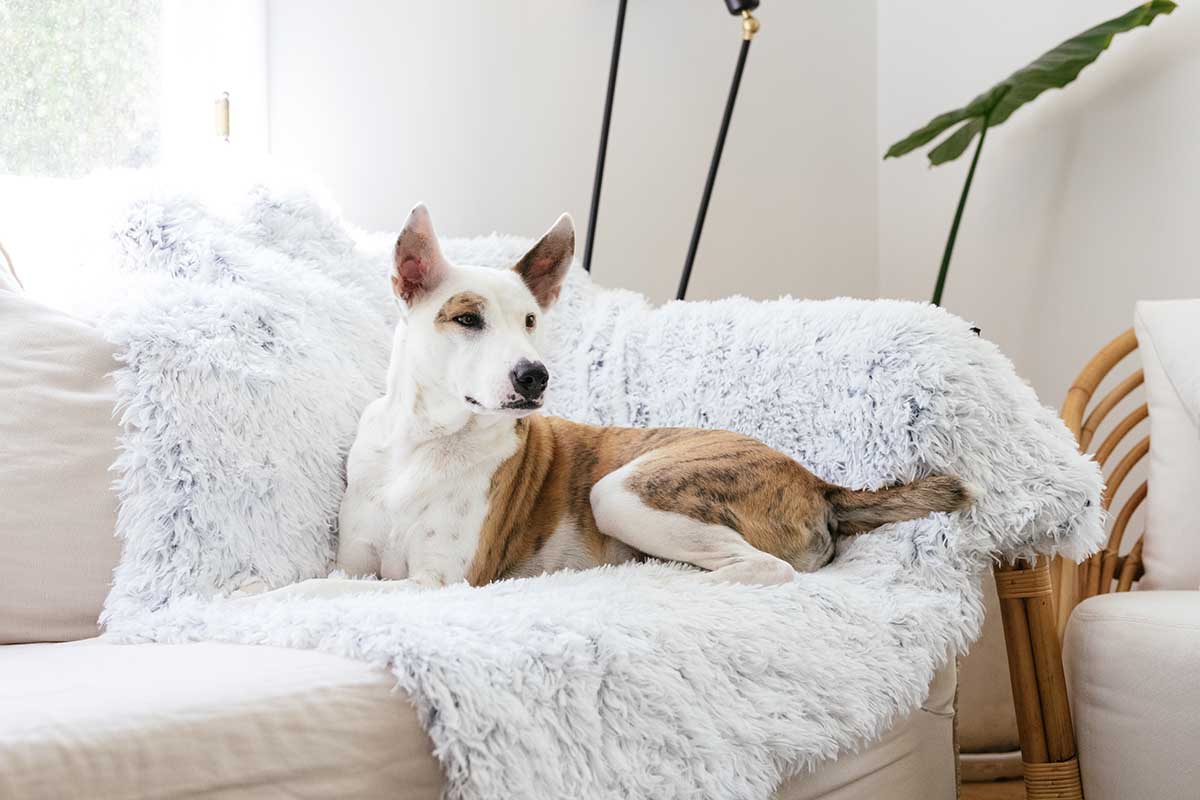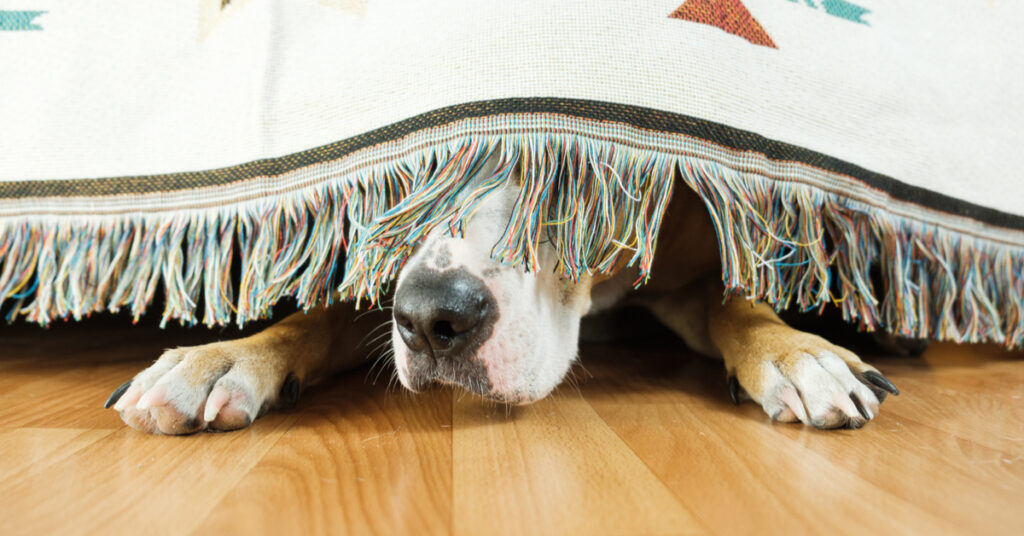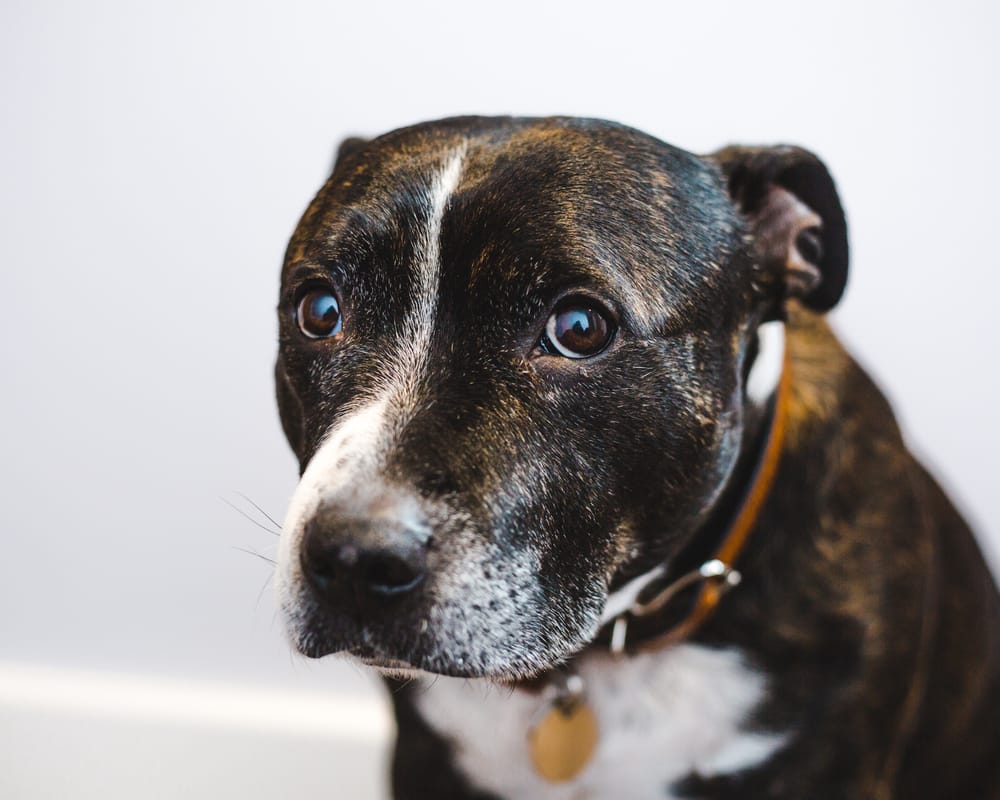If you have a challenging dog that gets stressed or overexcited in situations, chances are you’ve looked for a “cure.”
It has become popular online for dog owners and trainers to suggest that anxious, reactive, and overexcited dogs need to be given structure. A frequent way this structure is obtained is by using a raised platform, forcing their dogs to go to that platform, and staying on there while things are happening around them.
This is a dog version of the outdated parenting approach that children should “be seen and not heard.”
With dog training, if you want to truly help your dog learn new skills, there are no quick fixes.
The Good & Bad of Place Training

The idea behind this training methodology is that if you can tell a dog to go to a bed or raised platform they won’t be underfoot. In theory, this isn’t always a bad idea.
For example, if your dog has a habit of getting in the way while you’re in the kitchen cooking, sending your dog to their bed can be helpful. Once your dog is on their bed you can provide them with a chew or toy to entertain them.
The problem with “place training” arises when it is utilized when dogs are overwhelmed, and over threshold.
Dogs shouldn’t ever be asked to stay still in a location when they are stressed or scared. Reactivity or overexcitement like lunging or barking when they see another dog or people is generally a sign of stress and/or fear.
If your dog is stressed, it won’t be able to listen or learn.
Dogs forced to lay still on a platform may look “calm” and appear like their unwanted behavior has been fixed. However, it is achieved by correcting a dog repeatedly and harshly for getting off the platform. As a result, the dog learns to fear breaking their stay.
Dog training in the United States is an unregulated industry and so anyone, regardless of how much or how little experience they have, can call themselves a dog trainer. This can result in aversive or harmful training approaches getting perpetuated.
Shutting Down: Complying vs. Being Calm

There is nothing inherently wrong with teaching your dog to “stay”. In fact, this is an important skill to teach dogs. The difference is that you want to be sure that your dog is staying because they are comfortable with the skill and have been rewarded for doing so, not because they are afraid of what will happen if they don’t.
You should never ask your dog to stay still in a situation where they are afraid or uncomfortable. Just like if you were in a state of panic, you wouldn’t want to be forced (with fear of punishment) to remain in a position where you feel unsafe. Unfortunately, this is what often happens with place training.
Although someone might be able to post a short video showing their training “success” where a dog goes from appearing out of control to laying on a platform, it’s important to remember that a dog being compliant is not the same as a dog being calm.
A dog who is complying and doing a thing because they are afraid or uncomfortable is shut down and responding to commands out of fear of what will happen if they don’t. These dogs may comply for a time for fear of punishment, but the underlying fear or discomfort isn’t being addressed.
Videos shared on social media that claim to have “cured” reactive dogs and have a dog laying calmly at the sight of a trigger can look impressive. However, it’s important to recognize how damaging it is to use stay-in-place behavior as means of managing a dog who would otherwise be showing signs of stress.
Over Threshold

When working with an overexcited or anxious dog our goal should be to keep our dogs “under threshold,” meaning keeping dogs at a level where they are able to focus.
The problem with “place training” as a method of control for reactive, overexcited, or stressed dogs is that it requires the use of force or aversive training tools (such as collar corrections, yelling, shock/ecollars) to force dogs to remain on their platform regardless of how they are feeling.
When dogs go over threshold, they are likely to respond with behaviors (like cowering, lunging, trying to get away, shaking, whining, body stiffening, barking, hiding, growling, or even biting) that is a dog’s natural way of communicating their discomfort.
Intentionally putting our dogs in situations where they are over threshold by requiring them to stay close to triggers is not only unfair to our dogs, but it can also be dangerous.
Intentionally putting our dogs in situations where they are over threshold by requiring them to stay close to triggers is not only unfair to our dogs, but it can also be dangerous. Especially if a dog has previously been punished for natural reactions like communicating discomfort through barking and growling, dogs will continue to be stressed and may intensify their response, which can lead to bites.
Alternatives to Place Training

Providing dogs with opportunities to move their bodies and minds allows dogs to naturally defuse stressful, anxious, or overly exciting expectations.
Instead of asking your dog to stay quiet and tolerate situations they find stressful or upsetting, it’s far more effective to give your dog alternatives that help them naturally reduce their stress. This can not only soothe an agitated dog but also help them to feel safe which can improve a dog’s future response to previously stressful situations.
Instead of suppressing behavior by trying to force your dog to stay in a position and be seen but not heard, it’s more useful to meet your dog’s emotional needs, especially during stressful situations.
Instead of asking your dog to hold a stay, provide your dog opportunities to do naturally stress-relieving behaviors like sniffing or chewing.
Options for ways to help dogs relax during stressful situations include:
- hard rubber toys stuffed with treats, food, (dog safe peanut butter) — these can even be frozen for an added challenge
- snuffle matts with treats and/or kibble sprinkled on
- chews
- sniffaris
- decompression walks
- treat-filled dog brain teaser puzzles
Proving enrichment opportunities isn’t about distracting your dog from something they don’t like or find stressful. Rather, it’s part of counterconditioning where you’re able to help change your dog’s feelings and emotional response to a stressful stimulus.
Over time, giving your dog relaxing activities during stressful situations can help your dog to become desensitized to triggers.
Give Your Dog Space

When working with a dog who is nervous, anxious, reactive, or fearful, it’s important to work at your dog’s pace and comfort level. By creating physical distance from your dog’s triggers, it will help your dog to be able to self-regulate and relax.
Dogs who are lunging, barking, growling are giving very clear signs that they are uncomfortable, “over threshold,” and too close to their triggers. Instead of trying to force your dog to “stay” in a position close to things that are upsetting, give your dog the opportunity to have more space from situations that are upsetting or challenging such as repair workers or other visitors coming into your home.
Creating a natural distance from triggers can help dogs to be calmer and more confident. This could look like giving your dog space in another area of your home behind a baby gate, a closed door, or in a crate with favorite toys or chews to soothe and entertain your dog.
Paying attention to your dog’s comfort, giving them space, and enrichment opportunities allow owners to prioritize a dog’s emotional wellness instead of placing unrealistic and unfair expectations on their dog’s behavior.
Remember, if your dog is having a difficult time staying calm or isn’t listening to your cues, it’s not because they are trying to frustrate you or be bad. Barking, jumping, and lunging — although challenging behaviors — are natural ways for dogs to communicate. They are having big feelings and are a sign for us that they need support.

